
In Andalucia most of the Pueblo Blancos – the whitewashed villages – are most often located on mountain tops and visible on a long distance. With Setenil de las Bodegas it's different. When the people of Andalucia settled they usually built there fortified towns on a hilltop. Setenil is different because of its location at the bottom of the ravine that the Trejo River has excavated. The houses at the bottom are built into the cliffs which is what makes this town unique.

I have just returned from a week in Spain where one of the things we did was to do a day trip from Malaga to Ronda and Setenil. Although Setenil is not as well known as Ronda, it is arguably the most special of the two. I had never heard about this place, but my sister and traveling companion, knew about this little town. Since it is only a twenty minute drive from Ronda, we chose to include a visit here too.
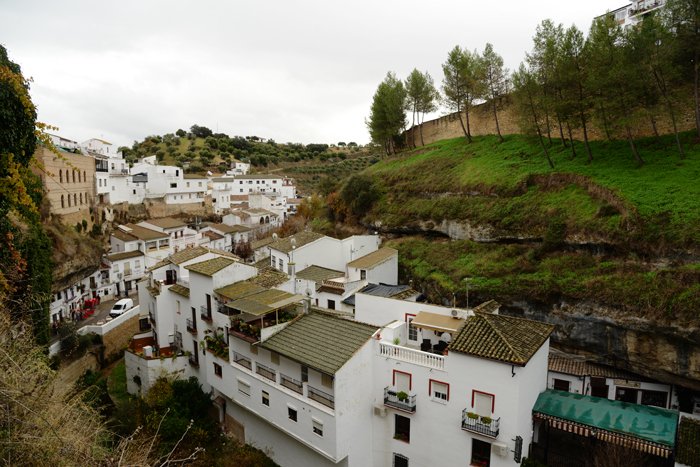

As we approached via the road from Ronda, it wasn't until we drove into town that we saw that there is actually a town here. We chose to park on the outskirts of town and then stroll around. Something we found out was a sensible choice. The streets are extremely narrow and inside the "center" the streets are all one-way. We walked along narrow and steep alleys down to the bottom of the ravine to the houses that have cliffs as roofs. Only the facade of the houses are visible and looks like they are growing out of caves under the mountain.

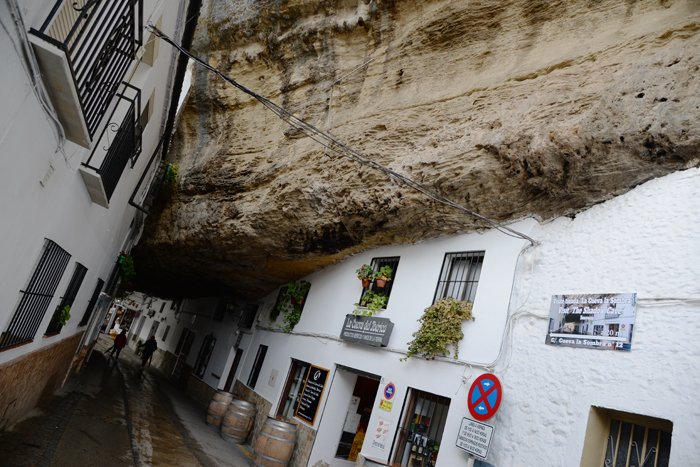
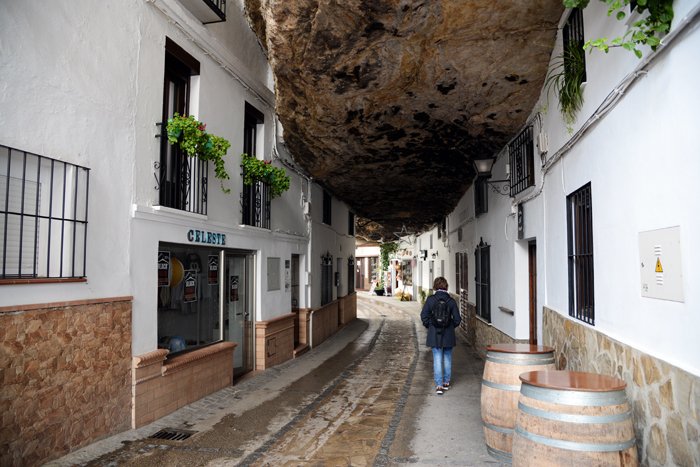
It looks like a rock that has pushed itself down between the houses. But it is the houses that are built underneath. Since we were here on a day with some rain, it was okay to walk in the streets with the cliffs hanging outwards. They provide natural protection. Apart from that, it was an amazing feeling to walk underneath!
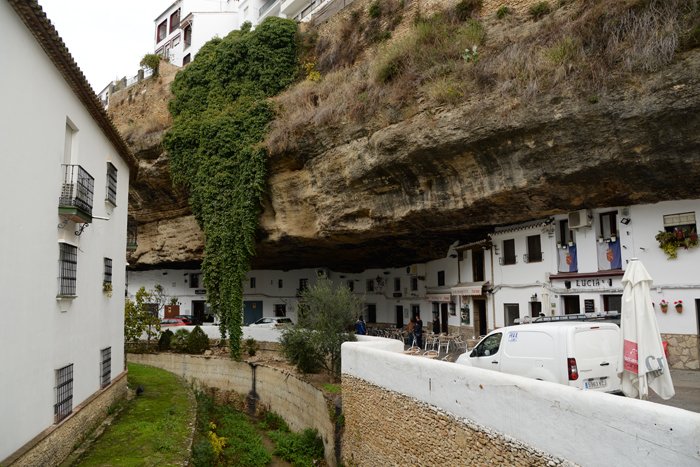
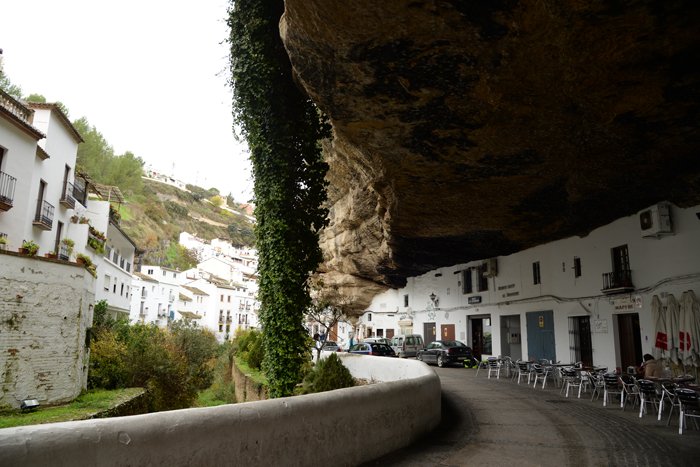
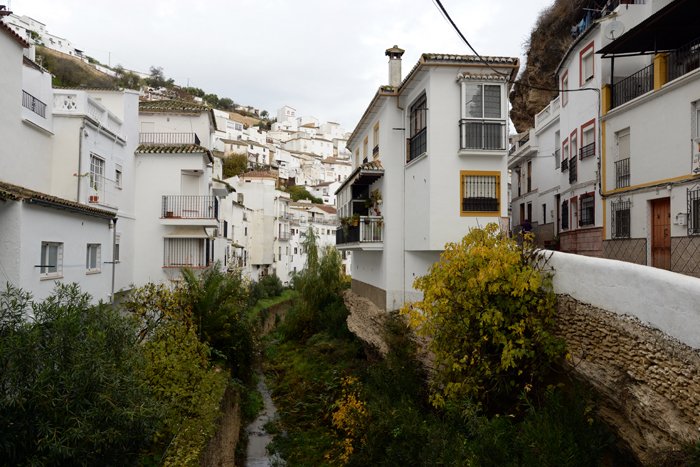
The road leads us across the bridge to the «sunny» side of town. The photos above shows the street we followed. Huge plants of 10 -12 meters hang out over the rock and down to the street. Now we were right at the bottom of the ravine with the river on our left and the cafes on our right hand.
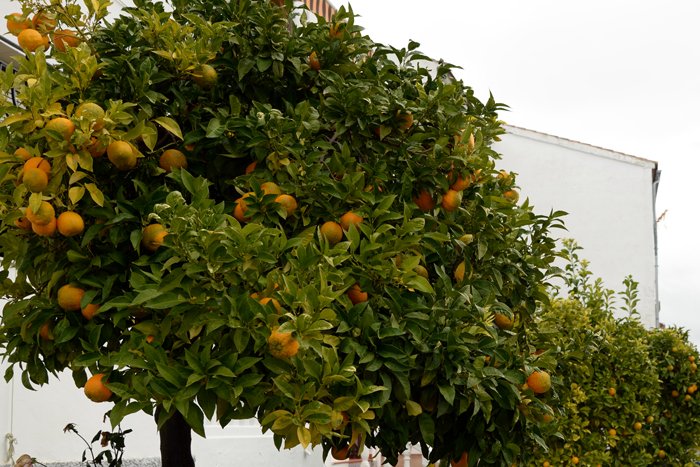
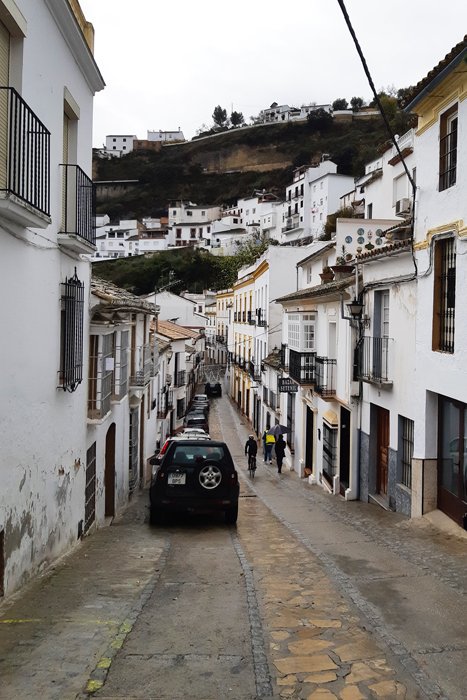
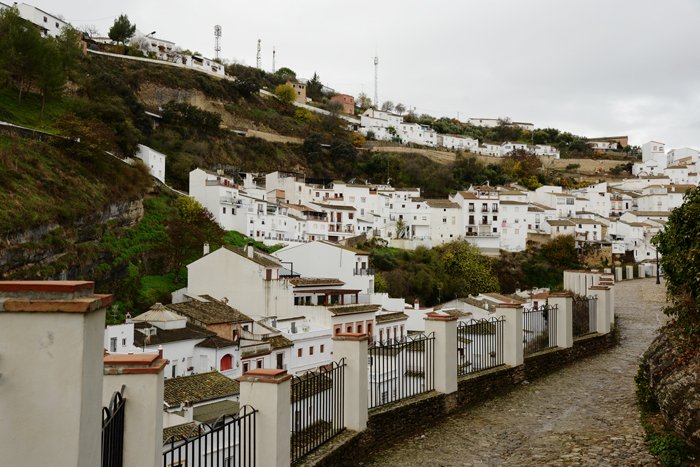
Then it was up the narrow streets, past houses with colorful doors, flower pots and orange trees. On a sign you will find some information about the city. The name Setenil comes from "septem nihil" which means "seven times nothing". It refers to the fact that it took seven attempts for the Christians to conquer the city. It was not until the eighth attempt in 1448 that they succeeded in expelling the Arabs. However, it is known that people in this area have lived in caves way back to the Stone Age.


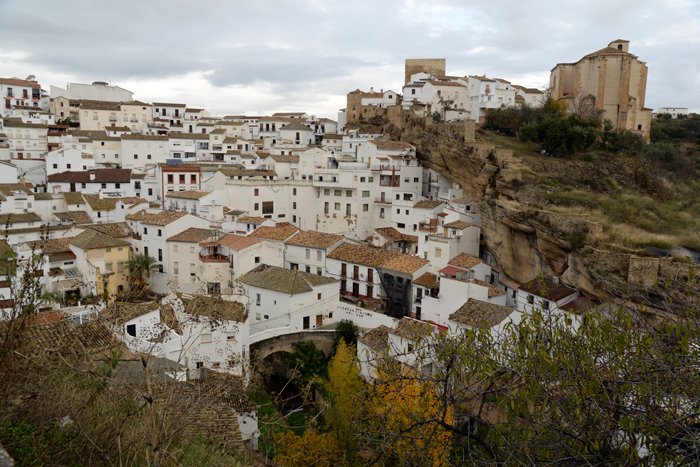
On the outskirts and on a hill above the town lies the fort built sometime in the Middle Ages. A good and strategic location. I am not sure how much of it is intact or if it was open to the public. We didn't check that out.
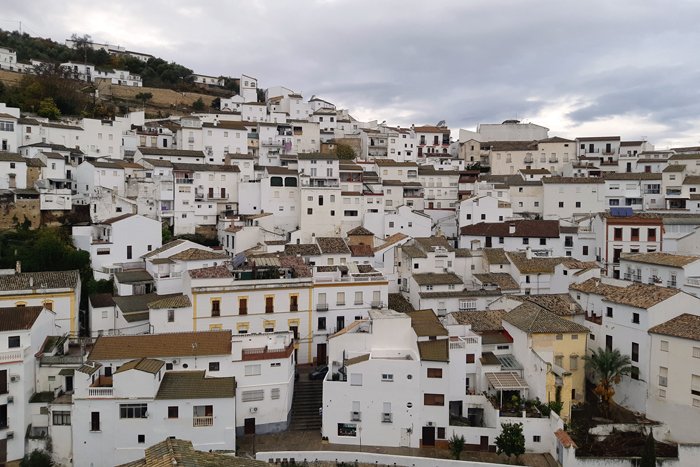
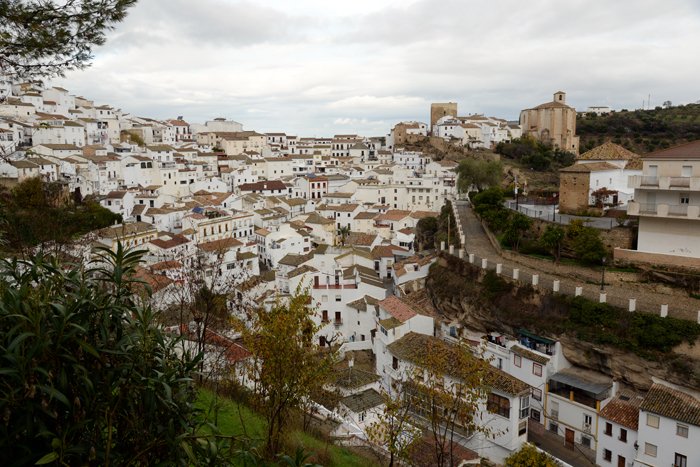
Although Setenil de las Bodegas has a fort and a church worth visiting, it is first and foremost the town itself and its location in the ravine, which is the real attraction. In my opinion the best way to experience this town, is to walk around. It's so small and easy to walk through most of the streets within a few hours. We passed a hotel, several cafes and bars, so it is possible to take a little break and get some food and drinks.
Please do follow if you want to keep up with my next travel story. Any upvotes or resteems are hugely appreciated!
Latest travel stories, check out :
Hiking in Argentina - Mirador los Condores y de las Águilas
U.J
Kristiansand, Norway
All the photoes are mine, Ulla Jensen (flickr, Instagram and facebook)
[//]:# (!steemitworldmap 36.863203 lat -5.175024 long Spain – A unique town in a unique location d3scr)Latest content: Travel, Art, Food, Article, Poetry

